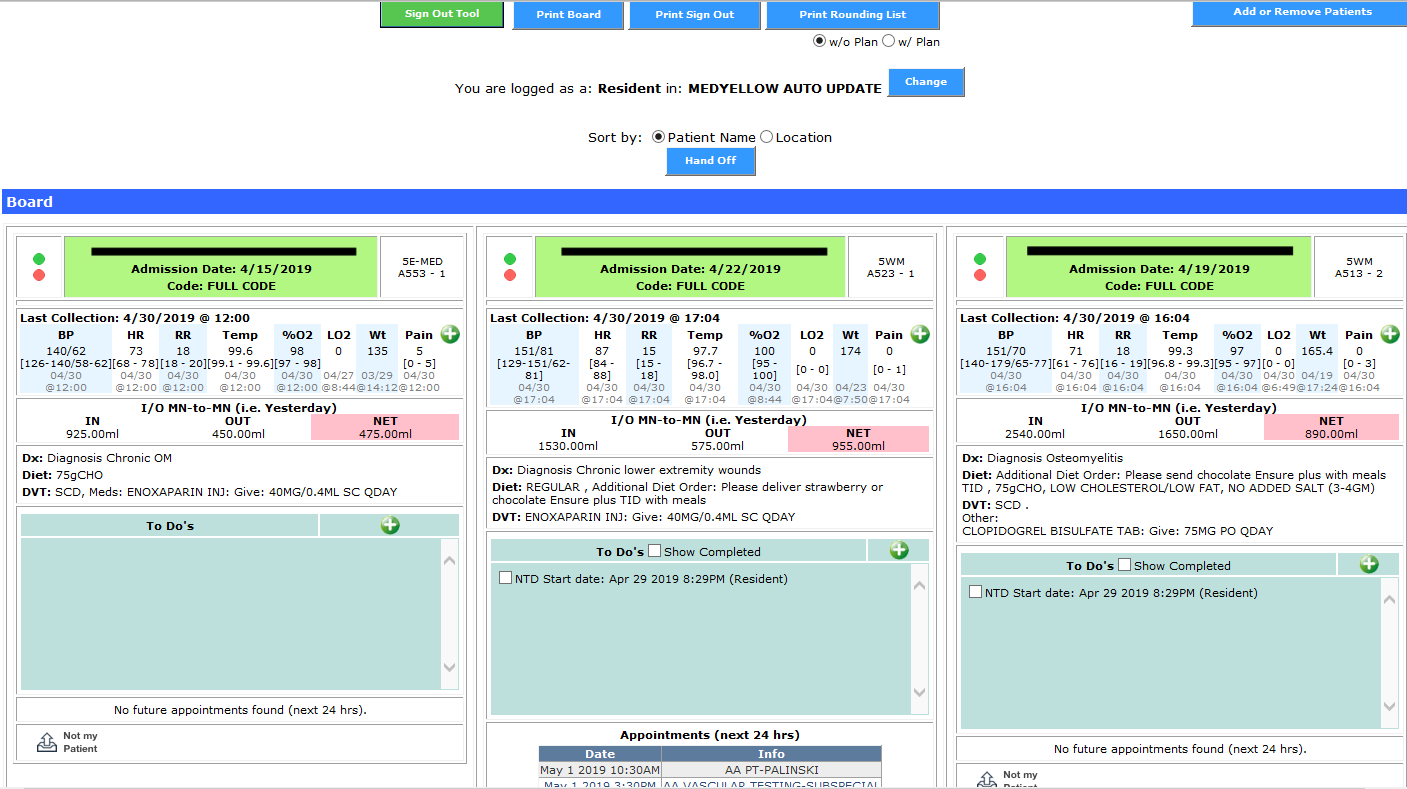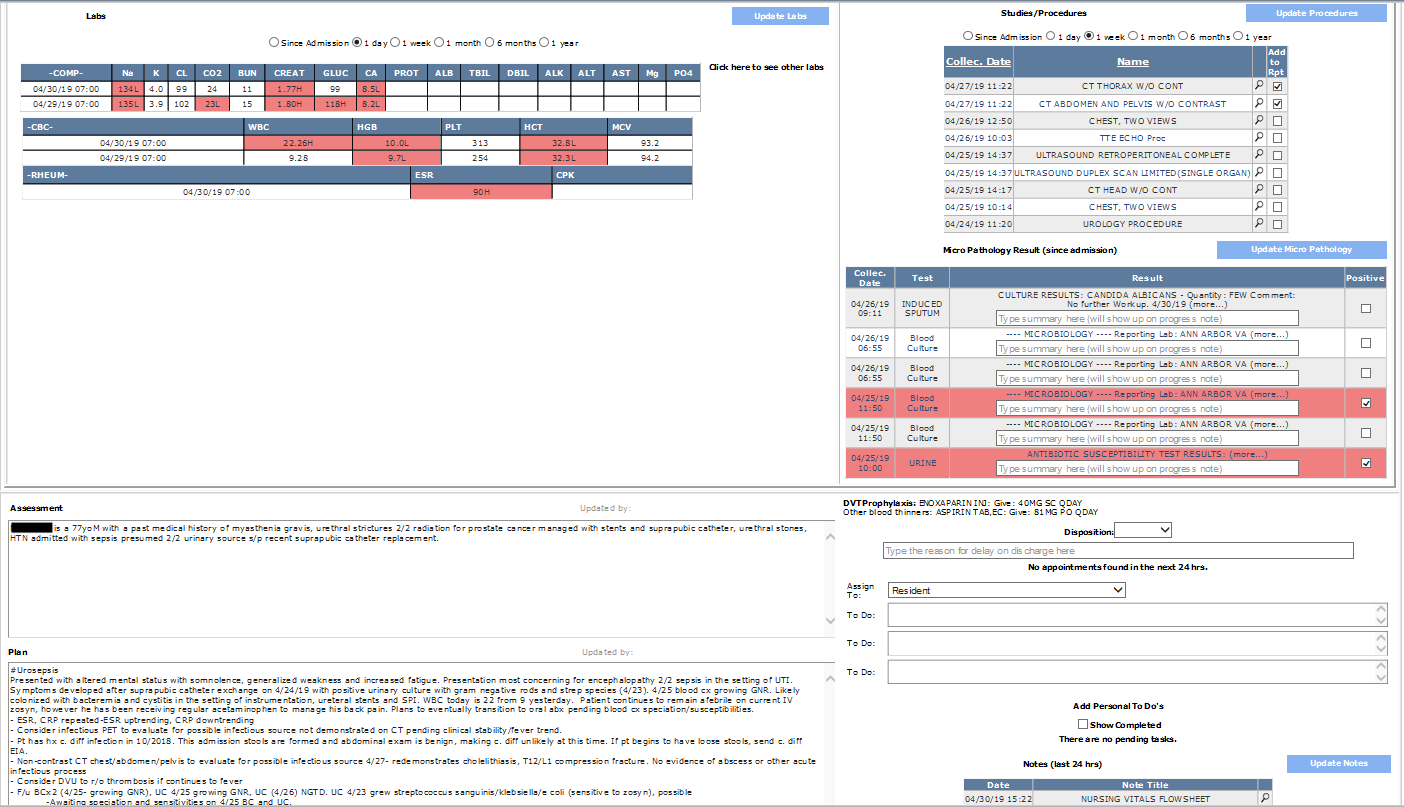Background: The Department of Veterans Affairs (VA) originally released the Computerized Patient Record System (CPRS) in 1997. While revolutionary for its time, there has been limited substantial update in the last twenty years. Customization opportunities and ease of acquiring data are limited compared with newer, widely adopted electronic health record (EHR) systems.
Purpose: To develop an inpatient dashboard tool for CPRS that improves satisfaction, decreases time at the computer, standardizes inpatient notes, & improves safety measures.
Description: An inpatient electronic dashboard hub was created that draws data directly from the Veterans Health Information Systems and Technology Architecture (VistA) Integration Adapter (VIA), which allows it to pull data from every VA in the nation. Through this central dashboard is displayed patient identifiers/code status, intake/output, & vitals that are updated every 8 minutes as well as on demand. Selecting a patient’s name from the dashboard launches a patient-specific view that shows all of the above as well as brings in an integrated note writing tool. Also in this patient-specific view you can access labs, studies, microbiology, and a medication administration record. When the daily progress note is finished, this can be conveniently copied and pasted into CPRS in an organized format.This tool was launched on the Ann Arbor VA’s general medicine services January 2019. After the residents completed their inpatient month, an electronic survey was provided to give feedback on the tool. From January 2019 through September 2019, 43 residents responded that had used the dashboard. 88% of respondents favored the dashboard to CPRS, 10% were neutral, and 2% preferred CPRS. 93% found the tool reduced daily work stress while 7% were neutral. 73% found that the tool saved time for rounds, 22% were neutral, and 5% felt the tool increased time for rounds. 65% reported that they were more aware of which patients had deep vein thrombosis prophylaxis and Foley catheters and, for the other 35%, awareness did not change. Of the respondents, 12% found errors or omissions with the tool daily, 64% found errors or omissions a few times throughout their month, and 24% never found errors or omissions. Commonly cited ‘errors’ were slow loading times, printing errors, and duplication of data.
Conclusions: Residents greatly prefer the dashboard application to native CPRS. This tool generally made utilizing the computer more efficient, decreased daily work stress/burnout, increased awareness of safety measures (DVT prophylaxis, Foley catheter use), and standardized inpatient notes. Throughout the test period most users found an error or omission, which highlights the importance of rapid plan/do/check/act cycles to continuously improve new initiatives based on feedback. This dashboard tool for CPRS has great potential to improve the user experience and patient safety for the care of veterans across the VA system.


